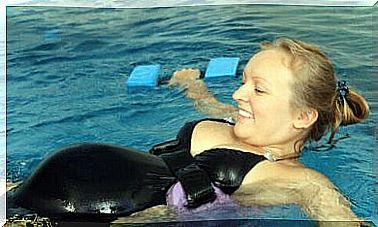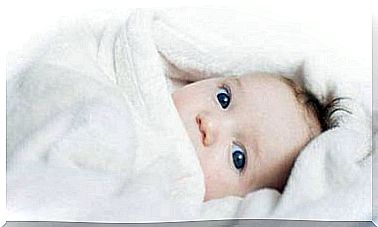Fat In Breast Milk: Some Data – Being Parents

The different fats in breast milk have functions that go far beyond nutrition. Milk is a living and changing tissue, and therefore its composition is not uniform. Thus, the amount of their components vary from day to day and between meals. In addition, the composition of breast milk gradually changes as the baby grows.
Breast milk and its nutrients
Even if the mother’s diet does not determine these changes, some nutrients can be affected by what the mother eats. Usually, breast milk is made up in a specific way that meets the baby’s developmental needs. This plays out in every stage of growth, including the needs of premature babies.
The energy content of breast milk consists primarily of two substances. The first substance is lactose, which is the most abundant component of milk. The other major component is the fat in breast milk.
It is interesting to remember that the fats in milk also make it possible to transmit liposoluble molecules. For example, vitamins A, D, E, K and other carotenoids. Today we will talk about three interesting facts about these breast milk fats.

The fat in breast milk is distributed as an emulsion
Milk is an emulsion containing fat particles, known as fat globules, dispersed in an aqueous environment (the serum). Fat cells are produced by the cells of the mammary epithelium. They come in different sizes, with a diameter varying from 0.1 to 10 microns.
As for their composition, blood cells contain substances specific to the mammary epithelial cell. They are filled in high proportion with triglycerides. But their primary feature is that they are covered with a membrane of unique structure, known as the membrane of milk fat globules.
Why is this membrane important?
It is very interesting to know that this membrane has three layers of phospholipids, while the rest of the body has only two. Thanks to this unique membrane architecture, the fat globules do not unite with each other and keep the fat particles separate from the water phase.
Moreover, the structure and composition of this membrane allows the transport of lipids which give metabolic importance. Like for example sphingomyelin and gangliosides. At the same time, the milk fat globule membrane is a source of many bioactive components. These include glycolipids, glycoproteins and carbohydrates, which have important functions in the brain, gut and immune system.
Fat globules in milk affect the development of intelligence
The lipid components envelop the fat globules. For example, sphingomyelin and gangliosides, are highly concentrated in the brain. These components are involved in the formation of connections (synapses) between neurons and in the formation of myelin.
Myelin is important because it is used for the isolation of axons. This then results in a more efficient transmission of nerve impulses. Myelination is a process that accounts for a large part of brain growth, during gestation until the first two years of life. Also, studies show that this process can continue for up to 5 or 10 years.

Several clinical trials have been carried out in populations of children (from premature babies to preschool children), demonstrating that dietary supplementation with the membrane of milk fat globules improves cognitive process and behavior.
Fat globules in breast milk boost the immune system and promote gut health
Some studies carried out on animal guinea pigs have shown that gangliosides strengthen the immune system. In addition, other components transported by fat globules have an effect on the immediate response. a. Such components include different proteins, such as lactadherin, mucin-1 and b utyrophilin.
All of these components influence the immune system through different mechanisms. For example, they can interfere with the adhesion of pathogenic microbes to the intestinal epithelium. Others have a bactericidal action and can even act in a beneficial way on the development of the intestinal microbiota.









